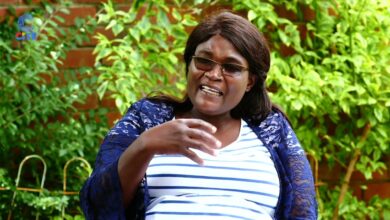Livestock feed production boosts Mwenezi’s agricultural economy

Villagers in Mwenezi have managed to reduce cattle deaths by producing a nutritious feed formulation for their livestock which has boosted the district’s agricultural economy.
Livestock is crucial for rural communities, as it is closely linked to social and cultural lives where animal ownership results in sustainable farming, economic stability and for farmers in Dungwe Village, Ward 1 in Mwenezi, livestock production is now part of their daily farming activity.
“In as much as there is a growing demand for food for people, producing feed for our animals is important because like humans, livestock also suffer from malnutrition. When there is drought and limited financial inability to buy food, animals are affected because people tend to forget about them,” said Trust Shumba during a tour of his homestead in Dungwe who said villagers could produce animal feed weighing up to one tonne.
“Before we brought a grinder, we used slashers to cut ingredients but cattle were failing to eat as some pieces were too big or too hard. But with a grinder, the feed chunks are broken down to easily produce feed weighing one tonne.”
Shumba is one of the villagers who received training from the Zimbabwe Resilience Building Fund (ZRBF), Enhancing Community Resilience and Sustainability (ECRAS) project that seeks to increase communities capacities against recurrent hazards that affect the country.
These recurrent hazards include drought, mid season dry spells, livestock death, crop pests, floods among other financial shocks that occur in Zimbabwe.
To reduce livestock deaths in the district, the ZRBF ECRAS project educated villagers on how to produce using livestock feed using local resources such as velvet beans, maize stalks, sugar cane stalks, acacia seed cords, coarse salt, chicken droppings and monkey bread that is high in nitrogen.
Shumba said they mixed the one-tonne feed with 50 kg of urea fertiliser, added a mix of 20 litres of water and 100kg of salt, which was put in an underground pit before ramming.
“The dug up pit must accommodate one tonne,” he said.
Shumba highlighted the pit was first wrapped in plastic before adding feed to preserve moisture.
“After ramming, we cover the pit with soil and the mixture goes through gradual decomposition where it develops an appetising aroma that will entice the cattle to come and eat.”
Vonai Dube, a widow from Tengera Village, Ward 2 Neshuro concurred their livestock feed was a nutritious supplementary feed that saved their livestock from starvation especially during drought.
“The ZRBF-ECRAS project also taught us the recommended feed given to cattle per day, as servings differ for livestock on survival and those that require fattening,” she said.
Mwenezi District Agritex Officer, Veronica Muchechetere, who chairs the local ZRBF-ECRAS project steering committee pointed out villagers were now producing adequate food to feed both themselves and animals, with no crops going to waste.
“We have activities that improve feed availability after we realised farmers were facing nutrition challenges related to feeding their animals. So the animals are now fed by what the farmers produce. Farmers must not only produce food for humans in their household but must increase food security for their animals. When farmers are producing food, they must have their animals in mind, which is why the ZRBF-ECRAS project has a component of fodder production and feed formulation,” she said.
The stock feed, said Muchechetere, was produced from crops harvested from the fields.
“Maize stalks can be used to make feed. After farmers use the maize cob for their food, the stalks are added with urea fertiliser,” she said.
The AGRITEX officer noted that the locally made stock feed has reduced the number of cattle deaths in the district.
“Due to such interventions, the district only had 565 cattle deaths last year. All the farmers producing feed for their livestock have managed to save their animals and increase nutrition. In terms of resilience, this is a plus for our farmers who rely on cattle as their source of livelihood.”
“Mwenezi is one of the districts known for cattle production but for the past years, there were many cattle losses to hunger, as the district is prone to drought due to its geographical Region Five location. Our rainfall is usually between 400 to 500 millimetres with the exception of this year where we received around 900 millimetres.”
Besides livestock production, other sustainable projects done by farmers in Mwenezi included breed improvement for poultry and goats.
“The ZRBF-ECRAS project realised resilience is not achieved by having one activity but layering them and all of our farmers do not specialise in one activity but several. This is how the project enhances the community’s productivity capacity while transforming people as well,” she said.
“We have Boer goats and are now introducing Kalahari goats. We have road-runners and we seek to improve their egg-laying capacity. Farmers also do pen fattening and this happens around July, August and September where our pastures are low.”
The AGRITEX official said as an indication of how well the farmers were doing, they had contracts with Montana Meats, where they supplied a variety of meat from their livestock.
The ZRBF ECRAS projects in Chiredzi and Mwenezi are implemented by Care International, Plan International, ICRISAT and funded to the value of US$9.7 million.
They started in July 2016 and end in June 2022.





